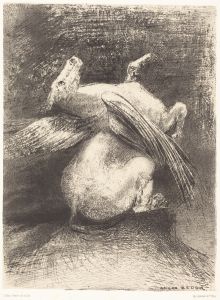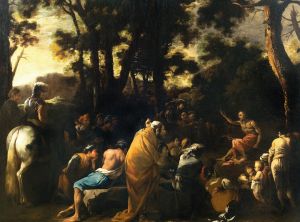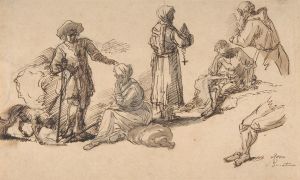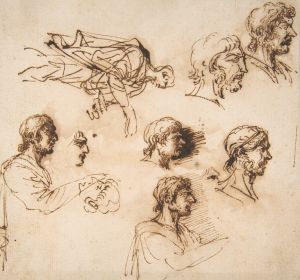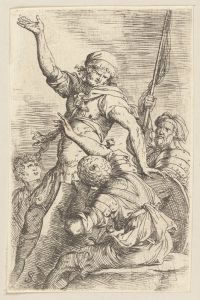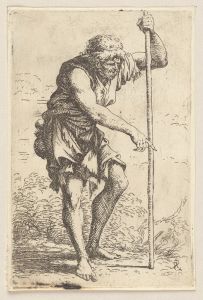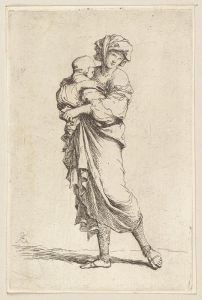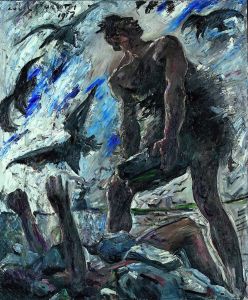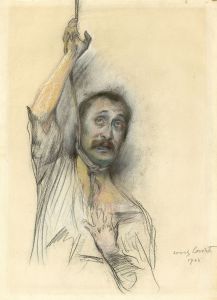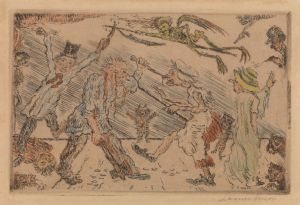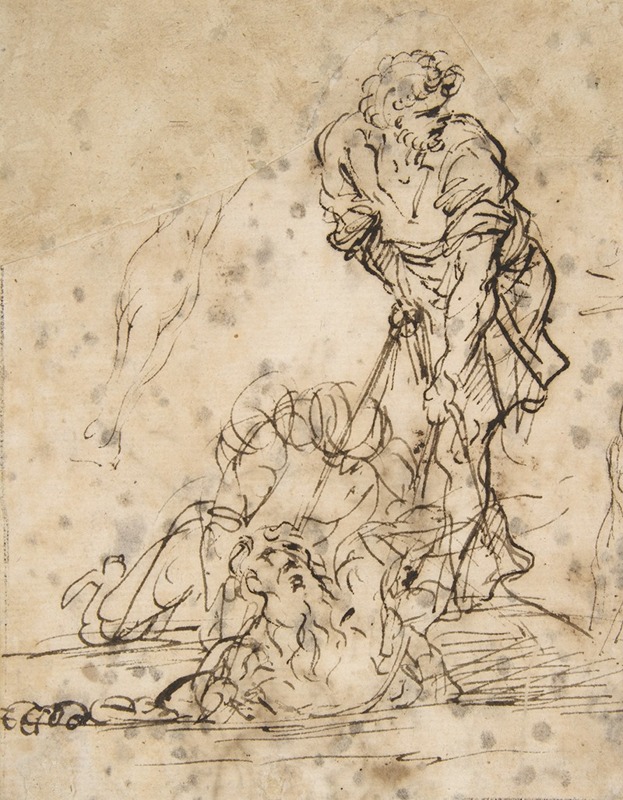
Studies for a Figure Lifted from a Grave or Pit by Cords.
A hand-painted replica of Salvator Rosa’s masterpiece Studies for a Figure Lifted from a Grave or Pit by Cords., meticulously crafted by professional artists to capture the true essence of the original. Each piece is created with museum-quality canvas and rare mineral pigments, carefully painted by experienced artists with delicate brushstrokes and rich, layered colors to perfectly recreate the texture of the original artwork. Unlike machine-printed reproductions, this hand-painted version brings the painting to life, infused with the artist’s emotions and skill in every stroke. Whether for personal collection or home decoration, it instantly elevates the artistic atmosphere of any space.
Salvator Rosa (1615–1673) was an Italian Baroque painter, poet, and printmaker known for his unorthodox and often dramatic works. His oeuvre includes landscapes, portraits, and historical paintings, often imbued with a sense of the mysterious and the macabre. One of his intriguing works is "Studies for a Figure Lifted from a Grave or Pit by Cords," which reflects his interest in dramatic and emotionally charged subjects.
"Studies for a Figure Lifted from a Grave or Pit by Cords" is a drawing that showcases Rosa's skill in capturing human emotion and movement. The drawing is a study, meaning it was likely a preparatory work for a larger painting or a project that Rosa was contemplating. As a study, it provides insight into Rosa's artistic process, revealing how he explored composition, anatomy, and the interplay of light and shadow.
The drawing depicts a figure being lifted from a grave or pit by cords, a scene that evokes themes of resurrection, salvation, or perhaps a more sinister narrative. The use of cords suggests a physical struggle, and the positioning of the figure conveys a sense of tension and drama. Rosa's ability to convey such emotion and movement in a study highlights his mastery of the human form and his interest in dynamic compositions.
Rosa was known for his rebellious spirit and his tendency to challenge the conventions of his time. This is evident in his choice of subject matter, which often included themes of death, the supernatural, and the grotesque. His works frequently featured bandits, witches, and other figures on the fringes of society, reflecting his fascination with the darker aspects of human nature. "Studies for a Figure Lifted from a Grave or Pit by Cords" fits within this context, as it explores themes of mortality and the unknown.
The drawing also reflects Rosa's interest in the theatrical, as he was involved in the world of theater and often incorporated dramatic elements into his art. The composition of the study, with its focus on the figure's struggle and the use of chiaroscuro to create depth and intensity, suggests a scene that could easily be imagined on stage.
Rosa's work was influential in his time and continues to be studied for its unique approach to Baroque art. His ability to blend the real with the fantastical, and his willingness to explore unconventional themes, set him apart from many of his contemporaries. "Studies for a Figure Lifted from a Grave or Pit by Cords" is a testament to his innovative spirit and his skill as an artist.
While the specific details of the drawing's creation and its intended purpose remain unclear, it remains an important example of Rosa's artistic exploration and his contribution to the Baroque period. The drawing is a valuable piece for understanding Rosa's approach to art and his enduring legacy in the history of European painting.





